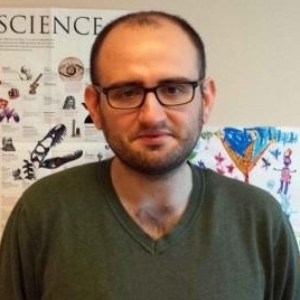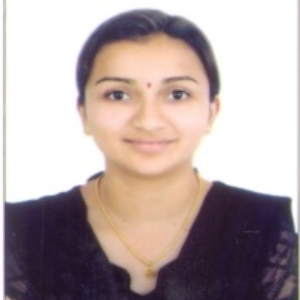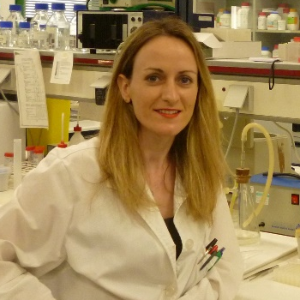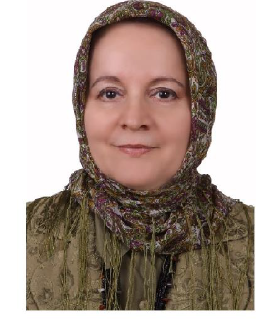Marina De Rosa, University of Naples Federico II, Italy
The hamartomatous polyposis syndromes are a heterogeneous group of rare syndromes showing autosomal dominant inheritance and characterized by the onset of gastrointestinal hamartomatous polyps and increased cancer risk. Among them there are the Peutz-Jeghers syndrome, juvenile po [....] » Read More

























































Title : Sensor technology for detection of biomarkers in gynecological medicine
Michael Thompson, University of Toronto, Canada
Detection of gynecological disorders of female reproductive organs, especially forms of cancer, typically involves screening of symptoms for the illnesses, followed by imaging with ultrasound or MRI. These techniques are time consuming and require trained professionals to perform [....] » Read More
Title : Revisiting the treatment of anemia in the setting of chronic kidney disease, hematologic malignancies, and cancer
Franco Musio, University of Virginia School of Medicine, United States
Anemia has and will continue to be a central theme in medicine particularly as clinicians are treating a burgeoning population of complex multiorgan processes. As a result of multiple randomized controlled trials (RCA), meta-analyses, and medical societal recommendations ove [....] » Read More
Title : Coordination of the cytomatrix micromechanics and the Warburg effect support survival of cancer cells
Tattym Shaiken, Baylor College of Medicine, United States
For decades cancer studies have focused on molecular genetics while the role of the cytoplasm has remained obscure. Separation of the viscous fluid cytosol and elastic-solid cytomatrix has offered an opportunity to solve an age-old mystery in biochemistry; how millions of complex [....] » Read More
Title : The daily availability of granulocyte transfusions in a large oncology center
Fleru M Aung, The University of Texas MD Anderson Cancer Center, United States
Introduction: Granulocyte transfusions are requested to treat severely neutropenic adult/pediatric Leukemic and Stem cell transplant patients with overwhelming bacterial/fungal infections. Clinical indications range from organ specific to soft tissue infections infection. Reques [....] » Read More
Title : Sinonasal undifferentiated carcinoma: A case report and brief literature review
Lashitha Reddy Konda, University of Buckingham, United Kingdom
Sinonasal undifferentiated carcinoma is a rare malignancy, of the nasal cavity and/ or paranasal sinuses accounting to be less than 1% of all malignancies. This case report will discuss a young male patient diagnosed with poorly differentiated carcinoma in the lateral wall o [....] » Read More
Title : Skeletal health in childhood cancer: A novel team approach to addressing a common late effect of cancer treatment
Michell Fullmer, Nemours Childrens Hospital, United States
Children with cancer are at an increased risk of developing osteonecrosis (ON) and decreased bone mineral density (BMD). In Acute Lymphoblastic Leukemia, patients aged 10 to 20 years are 10-20 times more likely to develop ON compared to younger children and adults. Al [....] » Read More
Title : Novel Siglec-15-Sia axis inhibitor leads to colorectal cancer cell death by targeting miR- 6715b-3p and oncogenes
Shoib Sarwar Siddiqui , University of Hertfordshire, United Kingdom
Colorectal cancer (CRC) has been referred to as the fourth most diagnosed cancer worldwide and the third leading cause of patient mortality in humans. Approximately, 1,931,590 new cases of CRC were reported with 935,137 patient deaths worldwide in 2020. CRC has become increasingl [....] » Read More
Title : The role of SRPK1 in tumour chemoresistance
Duygu Duzgun, University of Exeter, United Kingdom
Resistance to chemotherapeutic drugs is a major setback in cancer therapy, which leads to a high proportion of relapses and poor survival outcomes in cancer patients. Chemoresistance is frequently elicited by abnormal pre-mRNA alternative splicing, regulated by crucial kinases su [....] » Read More
Title : Gynecological sarcomas - the challenges of diagnosis and treatment
Lian Ulrich, Copenhagen University Hospital Rigshospitalet, Denmark
Sarcomas are rare gynaecological tumours, but because most have a bad prognosis, it is important to know when to suspect a sarcoma and to be able to diagnose it from the common uterine fibroleiomyomas. The most common variety of gynaecological sarcomas is the leiomyosarcoma, whic [....] » Read More
Title : Evolution of laparoscopic oncosurgeries in Rural Western India – our experience at a tertiary level 100 bedded private hospital over last 12 years
Akshay Kishore Nadkarni, 21st century hospitals Vapi, India
Laparoscopy has been a boon to mankind. Its first use has evolved during the 80’s & 90’s only for benign diseases. Over the years, it has evolved in complex cancer surgeries mainly abdominal & thorasic cancers. Last 10 years has seen the outcomes of minimally [....] » Read More
Title : Differentially expressed genes between wild type and drug resistant human cervical cancer cell lines
Nauf Bou Antoun, Kingston University, United Kingdom
Background: Cervical cancer although is highly preventable, is still the 4th most common cancer in women globally. World Health Organization estimate 640,000 new cases and 342,000 deaths in 2020, indicating the need for effective treatment at late stages of the disease, when it i [....] » Read More
Title : Laparoscopic radical hysterectomy – our experince in Rural South Gujarat India
Akshay Kishore Nadkarni, 21st century hospitals Vapi, India
Introduction: Laparoscopy has been a boon to mankind. Its first use has evolved during the 80’s & 90’s only for benign diseases. Over the years, it has evolved in complex cancer surgeries mainly abdominal & thorasic cancers. Last 10 years has seen the outcomes [....] » Read More
Title : A biomimetic nanoreactor for combined chemo/chemodynamic therapy on tumor through synergistic apoptosis and ferroptosis strategy
Hui Yu, Xi’an Jiaotong University, China
Chemotherapy is a traditional method in clinical cancer treatment. As a malignant solid tumor caused by abnormal proliferation of trophoblastic cells, choriocarcinoma can be cured by chemotherapy for preserving patients’ fertility potential. But at present the biggest hurdl [....] » Read More
Title : The global landscape of nasopharyngeal cancer incidence and mortality in 2020 and projections to 2040
Yanting Zhang, Guangdong Medical University, China
Background: Nasopharyngeal cancer (NPC) is one of the most common cancers in head and neck. Understanding the current epidemiological profile of international variations in NPC incidence and mortality and predicting the future NPC burden allows policymakers to make evidence-based [....] » Read More
Title : Cytotoxic activity of Salvia Officinalis in targeting JAK2/STAT3 pathway in breast cancer
Salma Alawadi Dawood , American university in Cairo (AUC), Egypt
Background: Breast cancer is the most common type of invasive cancer in women in their forties and fifties. Recent evidence suggests that JAK2/STAT3 signaling is constitutively active in breast cancer. Previous studies suggest that plant extracts, including Salvia Officinalis, ha [....] » Read More
Title : Role of natural antioxidants in cancer chemoprevention and chemotherapy
Dhanapal Sakthisekaran, University of Madras, India
Cancer chemoprevention is the use of natural or synthetic compounds for the inhibition, delay, or reversal of carcinogenesis. Chemotherapy is one of the most common treatments for cancer. It uses certain drugs to kill cancer cells or to stop them from growing and spreading to oth [....] » Read More
Title : Novel QRN substance effect of non small cell lung cancer cells
Abdulkadir Geylani Sahan, Suleymaniye Institute, Turkey
Introduction: Cancer is a scary name even though it is named after an innocent animal, even called a disease. It has sought the door to many different ideas working to experience many other theories and treatment alternatives as a disease. Despite the drugs that are still us [....] » Read More
Title : Analysis of adverse events of anaplastic lymphoma kinase inhibitors reported to FDA adverse event reporting system (FAERS)
Paiboon Jungsuwadee, Fairleigh Dickinson University, United States
Targeted cancer therapy often causes fewer adverse effects than traditional chemotherapy drugs. Thus, targeted therapeutic drugs have become mainstream of several hematologic and solid malignancies including non-small cell lung cancer (NSCLC). The first anaplastic lymphoma kinase [....] » Read More
Title : A minimal epitope peptide lipid nanoparticle vaccine for the E7 HPV oncoprotein
Tingting Ye, Zhejiang University, China
Cancer vaccines based on peptide antigens aim at activating T cells and mediate tumor- specific killing, leading to durable tumor regression and prolonged survival. However, the poor efficiency of unformulated peptide antigen at generating antigen-specific CD8+ T cells in vivo re [....] » Read More
Title : Diagnostic value of combining tumor and inflammatory biomarkers in detecting common cancers in Korea
Young Sun Kim, Seoul National University Hospital Healthcare System Gangnam Center, Korea, Republic of
Background: The ultimate goal of cancer screening is to diagnose invasive cancers early, while they are still curable. We aimed to validate the diagnostic value of blood-derived protein biomarkers that we developed for six common cancer in Korea. Methods: We have discovered 12 p [....] » Read More
Title : Explainable gastric cancer risk prediction: machine learning based models trained on data from regular health check-up programs of asymptomatic screening population
Ji Hyun Song, Seoul National University, Korea, Republic of
Backgroud: Since early diagnosis and treatment of gastric cancer increases the survival rate, regular gastric cancer screening is recommended for the high-risk group of gastric cancer. Objective risk stratification and assessment would be helpful to develop personalized stra [....] » Read More
Title : Cancer risk in the residents living near industrial waste incinerators in Korea
Yong Dae Kim, Chungbuk National University, Korea, Republic of
Three industrial waste incinerators (IWIs) were built in 1999, 2001, and 2010, within a 3 km radius of a town with a population of around 5000 in Korea. This study evaluated whether residents near these three IWIs had increased cancer incidence than those from other areas in Kore [....] » Read More
Title : Dual roles of TRAIL-TRAIL receptor signaling for low dose Decitabine-induced anti-tumor effects on glioblastoma (GBM) cells
Su Jung Park, Ajou University School of Medicine, Korea, Republic of
Low doses of DNA methylation inhibitors (DNMTi), such as DAC, exert durable antitumor effects. In this study, we demonstrated that low doses of DAC exert anti-tumor effects, at least in part, by inducing TRAIL and TRAIL receptors. DAC-induced TRAIL signal regulates specific immun [....] » Read More
Title : Characterization of the role of Salt-Inducible Kinase 2 in hepatocellular carcinoma metastasis
Yick Pang Ching , The University of Hong Kong, Hong Kong
Primary liver cancer is one of the most diagnosed cancer and leading cause of cancer death worldwide with hepatocellular carcinoma (HCC) contributing the majority of all cases. Advanced HCC has very poor prognosis due to frequent recurrence and metastasis. Salt-inducible Kinase 2 [....] » Read More